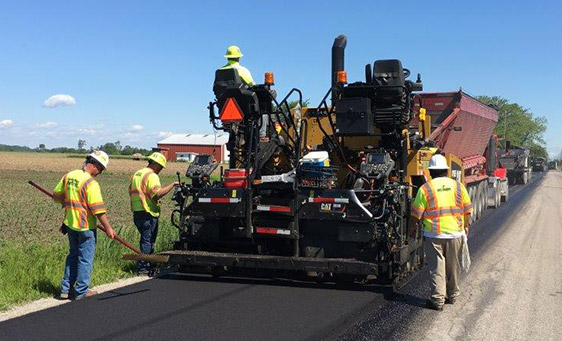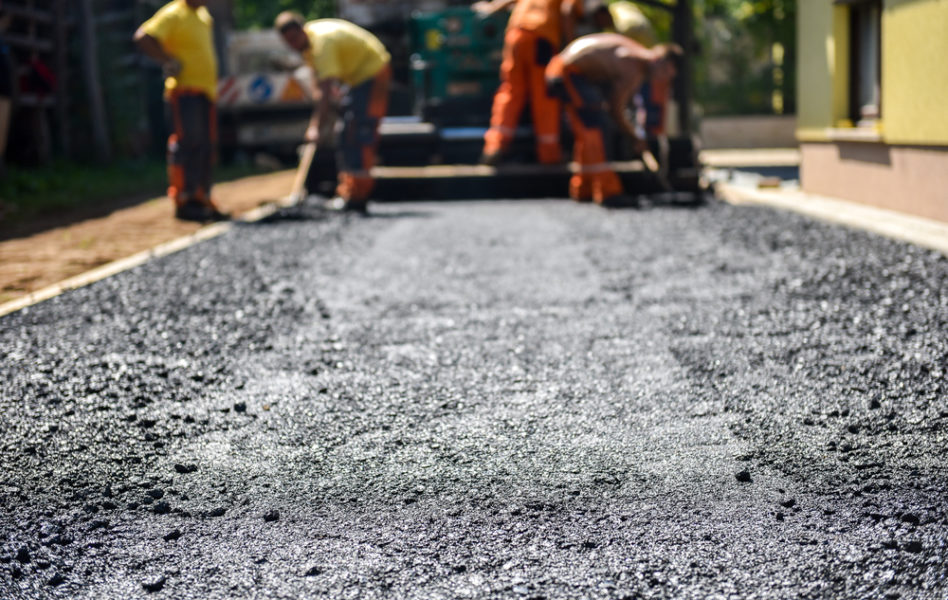Experience the Distinction: Hot Mix Asphalt Paving for Regrading Projects
Wiki Article
Unlocking the Secrets of Hot Mix Asphalt Technology
Exploring the midsts of hot mix asphalt technology uncovers a world where meticulous processes and accurate formulas converge to form our roadways and framework. The blend of binders, accumulations, and fillers isn't just a building and construction task but a strategic orchestration of longevity and performance. As we peer right into the detailed dance of components, a tapestry of strength and sustainability unravels. Yet what lies below this surface of asphaltic proficiency, and what keys wait to be unveiled in the world of leading technologies?Significance of Warm Mix Asphalt
Hot Mix Asphalt plays a crucial function in modern facilities development because of its durability and cost-effectiveness. As one of the most commonly utilized leading material for roadways, highways, and parking great deals, Warm Mix Asphalt provides a series of advantages that add to its value in construction tasks. One key benefit is its ability to stand up to rush hour loads and extreme climate condition, providing a reputable and durable surface area for transportation networks. In Addition, Warm Mix Asphalt is affordable in both preliminary building and construction and lasting maintenance, making it a preferred option for lots of facilities jobs.The durability of Hot Mix Asphalt originates from its make-up, which consists of accumulations, binder, and filler products that are very carefully picked and blended to satisfy particular performance requirements. This precise mix causes a solid and versatile sidewalk that can sustain regular use without significant wear and tear. Warm Mix Asphalt is 100% recyclable, additional enhancing its sustainability and environmental advantages. Generally, the value of Hot Mix Asphalt in framework growth can not be downplayed, as it remains to be a cornerstone of modern-day building methods.
Components of Asphalt Mixes
The make-up of asphalt mixes contains meticulously picked accumulations, binder, and filler products that are critical for accomplishing certain efficiency requirements. Accumulations are the primary component of asphalt blends, giving stamina and stability. These accumulations can be all-natural, such as gravel or smashed rock, or synthetic, like recycled materials from old sidewalks. The binder, usually asphalt or asphalt cement, holds the aggregates together and offers adaptability and durability to the mix. The choice of the binder is crucial as it directly affects the mix's efficiency in different weather. Fillers, such as moisturized lime or Portland cement, are utilized to boost the mix's workability and aging resistance. Angled Parking.The mix and percentage of these parts play a substantial role in determining the quality and performance of the asphalt mix. Engineers carefully design the mix to meet particular requirements, considering factors like traffic volume, environment problems, and sidewalk life expectancy. Appropriate choice and balancing of aggregates, binder, and fillers are essential for creating sturdy, durable asphalt sidewalks.
Mixing and Production Techniques

When the accumulations are chosen, the binder, commonly asphalt concrete, is included to bind the products with each other. The binder's high quality and amount substantially affect the mix's resistance, adaptability, and toughness to environmental elements. Furthermore, fillers like hydrated lime or Rose city concrete may be incorporated to improve certain features of the asphalt mix, such as its workability or wetness resistance.
During manufacturing, the aggregates and binder are warmed, typically in between 250-325 ° F(121-163 ° C ), to assist in blending and ensure correct layer of the aggregates. The blending procedure must be detailed to accomplish a homogeneous blend that promotes the desired performance features of the asphalt. Different strategies, such as batch blending or drum blending, are employed to accomplish constant and top quality asphalt mixes for construction jobs.
Variables Affecting Asphalt Efficiency
Factors affecting asphalt efficiency include a variety of variables that impact the sturdiness, long life, and total top quality of asphalt sidewalks. One key factor is the quality of Discover More materials utilized in the asphalt mix.
Ecological conditions also affect asphalt efficiency. Temperature variations, dampness infiltration, and traffic loads can all impact the structural stability of the sidewalk. Layout factors to consider, such as pavement thickness and drainage, are essential in making sure the lasting efficiency of the asphalt sidewalk. By carefully taking into consideration these professionals, variables and designers can optimize asphalt performance and enhance the life span of pavements.
Lasting Practices in Asphalt Technology

WMA permits for the manufacturing and placement of asphalt mixes site web at reduced temperatures contrasted to conventional hot-mix asphalt, resulting in lowered energy usage and greenhouse gas emissions. The use of porous asphalt blends can help minimize stormwater drainage concerns by permitting water to penetrate through the sidewalk and into the ground, promoting natural water filtration and charge procedures.
Conclusion
Finally, warm mix asphalt technology plays a vital duty in modern infrastructure advancement due to its sturdiness and cost-effectiveness. By carefully balancing parts, utilizing appropriate blending strategies, and taking into consideration various aspects, designers can create premium asphalt blends that withstand hefty web traffic loads and rough climate condition. Embracing sustainable methods, such as utilizing warm-mix innovations and recycled materials, even more improves the ecological kindness of asphalt technology.
Mixing and manufacturing strategies in warm mix asphalt modern technology involve the accurate combination and handling of accumulations, binder, and fillers to create a sturdy and high-performance asphalt mix.Factors affecting asphalt efficiency include an array of variables that influence the sturdiness, long life, and overall top quality of asphalt sidewalks. Lasting practices in asphalt modern technology encompass numerous initiatives intended at decreasing the ecological effect of asphalt manufacturing and paving processes. By integrating redeemed asphalt sidewalk (RAP) and recycled asphalt shingles (RAS) into brand-new asphalt mixes, the industry can considerably minimize the consumption of raw materials and energy, while additionally lowering landfill waste.
WMA permits for the production and positioning of asphalt blends at reduced temperatures compared to typical hot-mix asphalt, resulting in minimized energy usage and greenhouse gas emissions.
Report this wiki page